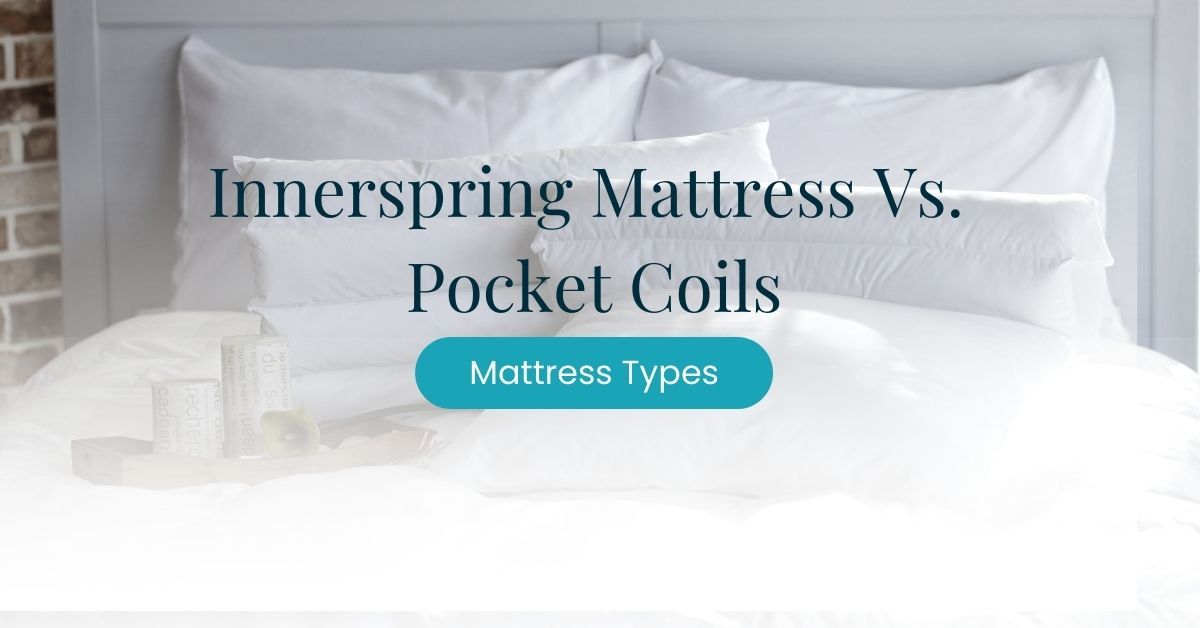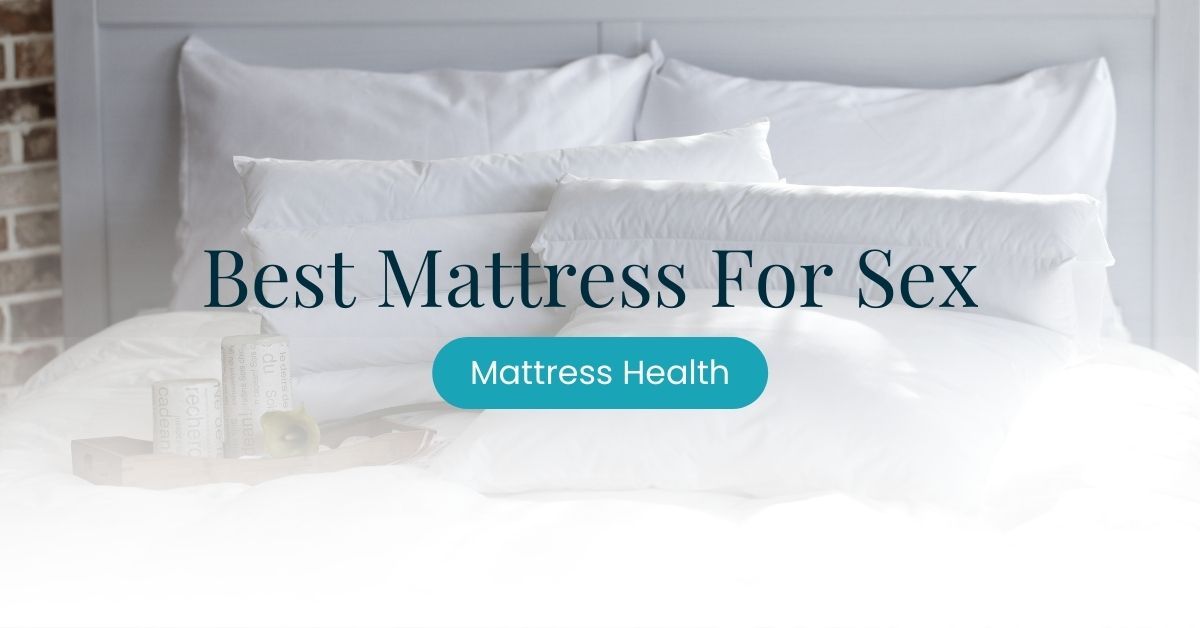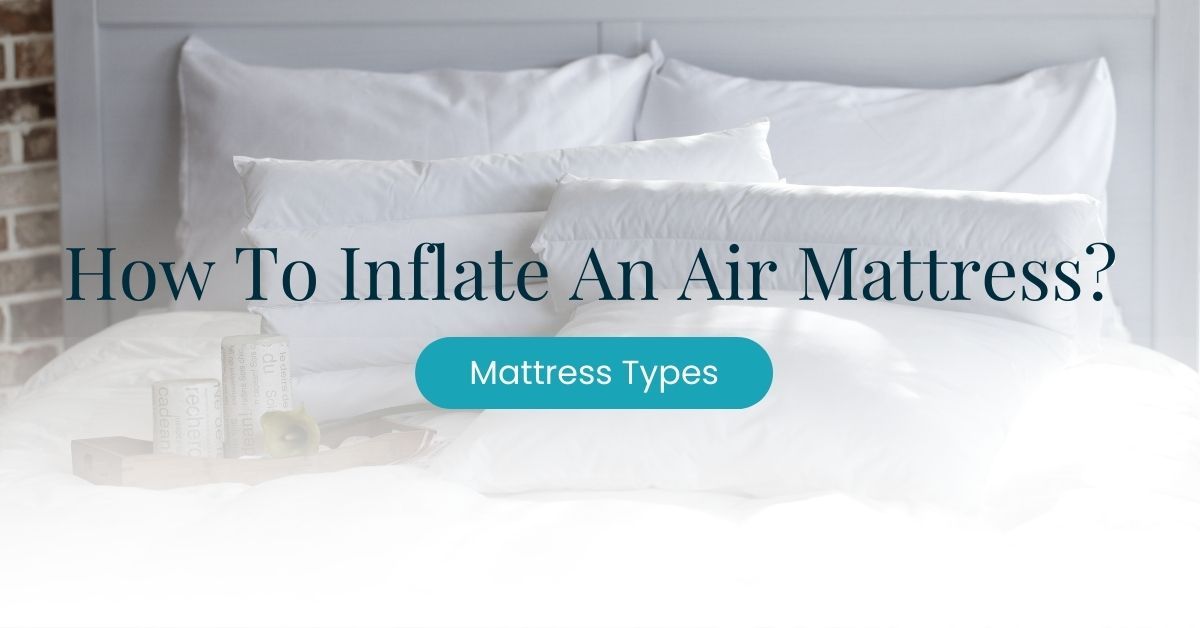The difference between innerspring and pocket spring mattresses is how their coils are made. Innersprings have multiple coils welded together to form one, big, compacted coil. While pocket coils are coils placed inside fabric pouches for isolation.
But, what’s up with these two spring-based mattresses? Which one is comfier? Which is cheaper? Will you be getting your money’s worth, or will you need a refund or a replacement? These questions are essential to buy the best mattress for your health.
So, to answer these questions, let’s find out how innerspring and pocket coil mattresses are similar and how they differ. And ultimately, which one’s better for your sleep routine?
What Are Pocket coil Mattresses?
Pocket coil mattresses have metal coils wrapped inside fabric pouches, hence the word “pocket”. These metal coils are individually pocketed, making them independently move from each other.

As the metal coils are independent of each other, each coil is able to respond to pressure independently from one another. This means that there’s more motion isolation compared to innersprings.
It also reduces ‘roll-together’—a situation where you and your partner roll towards the middle of the mattress while sleeping.
Models and Customisation
Some pocket coil models also have latex or memory foam top layers for added comfort, but these models are often marketed as hybrid pocket coils though. Nonetheless, hybrid pocket coils still retain their traditional pocketed coils structure.
Some pocket coil models allow customisation where you can add or reduce the number of springs inside, the more springs the ‘better’.
Pros and Cons of Pocket Coils
Now that you know striking details about pocket coils, let’s now move on to the pros and cons of having one. First, let’s talk about the pros:
Pros
- Pocket coils have superior weight distribution thanks to individually pocketed coils
- They provide excellent pressure relief for the neck, lower back, shoulders, knees, and hips
- Weight transfers and roll-together are significantly reduced
- The mattress surface is consistently levelled; no significant “sinking” feeling
- They are very durable and can last for a period of 8-10 years, depending on how much it’s cared for
- Some models are customisable (i.e. you can increase or decrease spring number inside)
- It has good internal airflow, helping you sleep cool and comfortable
Cons
- Pocket coil beds are tough to move and work around because of the number of springs inside, making them really heavy
- They are usually more expensive than the high-end innerspring models
- Some models don’t use hypoallergenic materials, making them not allergy and asthma friendly (i.e. some poorly manufactured latex material).
- They can develop dead spots, or weak coils, which translates to saggy areas developing from points that are used too often (ex. sitting in bed as work from home worker)
Innerspring Mattresses: What Are They?
Innerspring mattresses are beds with welded coils compared to a pocket coil’s individually pocketed coils. Manufacturers often use hourglass-shaped coils welded together to form one, big, weight-responsive coil.
With this in mind, innersprings are really firm, responsive, and supportive of someone’s body weight when sleeping, not to mention they’re cheaper than pocket coils. This is why this is a popular mattress for people who want just the right amount of weight and pressure support.
The downside is, innersprings are only good if you sleep solo. Roll-together, as discussed earlier, is a common phenomenon for couples when sleeping on an innerspring mattress.
Since the coils are welded together, one slight movement from a single coil will be enough to trigger other coils around it to move. Think about it as a domino effect: once a single piece moves, the other pieces follow.
In simpler terms, once your partner moves, you’ll most likely move too. Nonetheless, an innerspring is a real, good choice for solo sleepers (good news for single people).
Pros and Cons of Innersprings
After getting to know the most basic information on innersprings, now’s the time to get to know its pros and cons:
Pros
- They are usually very affordable as compared to pocket coils
- They support the user’s weight and pressure points good enough
- High-quality models may last up to 7 years or more, depending on usage
- They are easy to move around since they have fewer coils than pocket coils
- An innerspring’s internal coil structure promotes better internal airflow than pocket coils, making you feel cooler
Cons
- Innersprings usually sag in the middle as the coils get worn out
- Interconnected coils mean interconnected movement, leading to significant weight transfers
- They are not that great in weight distribution and just play through the “average” level
- High-end models can wear out quickly in comparison with pocket coil mattresses
- Dust mites love the hollow space inside an innerspring and can make a good breeding ground. Yikes!
Which One Should You Buy?
- How much are you looking to spend? If you’re looking for a budget option then innersprings are the way to go. However, if you have the means to splash out, then choose the comfiest one for you, may it be an innerspring or pocket coil.
- Do you have a sleep partner? Spouses, kids, siblings, or buddies, as long as they share the bed with you, they’re your sleep partner. If you do have one, you should go for a pocket coil to reduce sleep disturbances as well as the potential to roll-together.
- Are you a light sleeper? If you are, both mattresses are a good option, provided that you sleep solo on an innerspring. On a pocket coil, roll-together is reduced but not reduced to zero. You can still feel slight movements, but investing in a pocket spring with additional springs can help with this.
- Do your pressure points (neck, shoulders, lower back, hip) bother you? If you do, invest in a mattress with targeted pressure support found in pocket coil mattresses. Innersprings don’t have excellent pressure relief.
- Do you have allergies or asthma? Both innerspring and pocket coils models can be hypoallergenic; some models aren’t hypoallergenic though. But innerspring are more prone to dust mites because of their hollow interior.
Verdict: in the most general sense, we’d recommend a pocket coil because of its many benefits compared to an innerspring. Keep in mind, though, that your personal preferences are still paramount to your decision.
What Type Of Bed Spring Is The Best?
Offset coils are the best type of bed spring for innerspring mattresses. Offset coils are supportive, have contouring properties, and have lesser motion transfer compared to other types of coils.
Bonnell coils are cheap, and they are fairly responsive, not to the point where they can give you a smile whenever you lie down though, but they are durable and can last long.
The same is true for continuous-wire coils; they are average at best by being sturdy and durable. But not too promising enough to warrant a higher rating than offset coils.
Which Is Better For Your Back: Innerspring Or Pocket Spring?
Pocket spring mattresses are better for your back. This is because pocket spring offers targeted pressure support and contour for your back, so you can sleep without feeling your back becoming tense as you lie down.
Innerspring, on the other hand, offers generalised support, which is not a bad thing in itself. The only issue is that innerspring might place more pressure on your back area since it doesn’t offer enough contouring for your back.
Do More Pocket Springs Mean A Firmer Mattress?
Yes, the higher the number of coils, the firmer the mattress will be. This is because a higher number of coils means there is stronger resistance to applied pressure than a lower coil count.
Think about car suspensions for a second; the lower (and crappy) the number of suspensions, the more bouncy the ride is. And the more (and better) suspensions are there, the smoother the ride is. It’s the same for pocket spring comfort and coil counts.
Which Is Better For Side Sleepers: Innerspring Or Pocket Spring?
Pocket spring mattresses are better for side sleepers. This is because pocket spring mattresses offer targeted support for the pressure points in a side sleeper, namely: the neck, shoulders, hips, lower back, knees, and ankles.
Pocket springs also have a degree of contour in them that helps a side sleeper straighten their body during sleep, reducing the risk of neck, shoulder, or back pain the moment they wake up.
Innersprings don’t have supportive comfort layers for these pressure points, and it lacks the necessary amount of pressure support for these pressure points.
1 Sources
- Chardin H, Desvaux FX, Mayer C, Sénéchal H, Peltre G. Protein and allergen analysis of latex mattresses. Int Arch Allergy Immunol. 1999 Jul;119(3):239-46. doi: 10.1159/000024200. PMID: 10436396.






